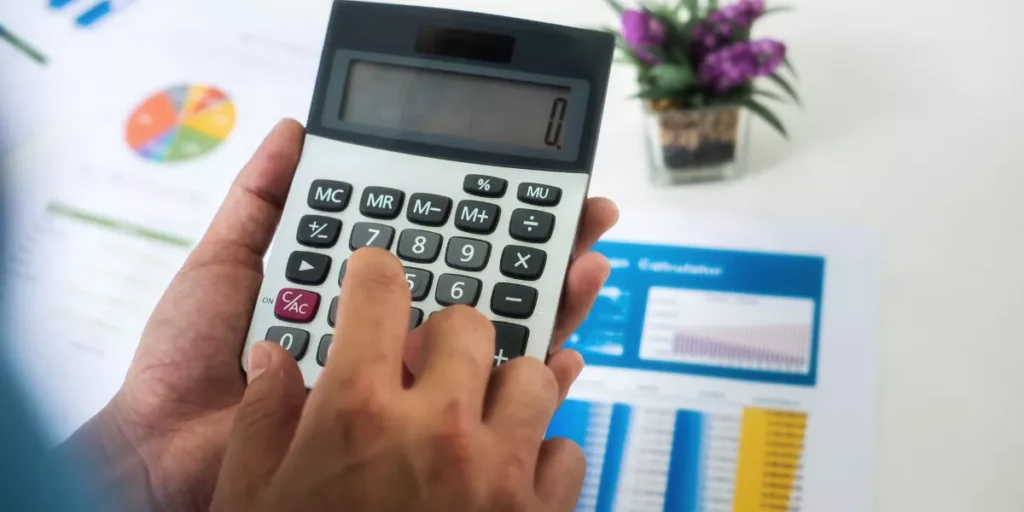Money laundering presents an intense danger to the global financial system by enabling criminals to convert illegal profits into legitimate money. The sophisticated “laundromat” system operates as complex crack-down networks to disguise illegal money origins. Wondering “what is a laundromat in money laundering?” This blog explores how laundromats function as money laundering schemes along with their operational structure and worldwide examples and explains UAE measures to fight these activities.
Laundromat in Money Laundering
The term “laundromat” in money laundering operations indicates a covert system which transfers illegal money between borders by concealing their illegal origins. Laundromats serve to wash illegally earned money so they appear sourced from legitimate financial activities. The money lost their trackability through multiple financial institution transactions extending across different countries during this concealed financial operation.
After the Russian Laundromat disclosure became public the term gained recognition as a common part of public discourse. The money received processing services from these third parties until it obtained legal appearance. Laundromats serve as hiding places for fraudulent activities executed by criminal organizations, corrupt politicians and business elites who want to avoid tax liabilities or sanctions from law enforcement.
Mechanisms of Laundromat Schemes
Understanding what is a laundromat in money laundering and how its schemes operate, is key to safeguarding against illicit financial activities. These schemes are sophisticated operations designed to disguise the illicit origins of funds, integrating them into the legitimate financial system. Multiple methods are used by these schemes to conceal tracking of money while cleaning up illegal proceeds. Below follows a list of fundamental methods used:
Establishment of Shell Companies
Shell companies maintain only legal status on paper because their existence occurs exclusively within jurisdictions with weak regulatory authorities. These entities function as smoke screens to hide the original fund owners and their source origins. Financial transactions under shell companies make it difficult for authorities to discover the criminals behind illicit activities because these companies hide their operators’ true identities. The entities create fraudulent invoices as part of trade-based money laundering schemes for sending money across international borders.
Falsified Loans and Trade Invoices

The method involves both shell companies creating artificial loans together with increased trade documentation to validate large fund movements. A shell company can provide a favorable loan agreement to another entity as a method to transport illegal money through false legitimate business dealings. Shell companies create false commercial documents through both excessive and insufficient product or service value declarations to fool authorities into believing legitimate trading activities thus facilitating border money transfers.
Use of Complicit Financial Institutions
Financial institutions actively join or disregard similar schemes with laundromats by allowing suspicious transactions. Financial institutions that willingly ignore the fact that transactions are illegal can do currency conversion or fund processing and international money transfer services. The mechanism of illegal money transnational transfer requires complicit banks to exploit regulatory framework weaknesses in order to move the money across international borders.
Exploitation of Legal Systems
The legal systems allow criminals to approve favorable court orders or use fake litigation procedures to legitimize their illegal financial deals. They gain authorization through court judgments to shift money under false pretenses either by presenting them as legal settlements or investments. The created appearance of legitimacy through this exploitation technique makes it harder for law enforcement to distinguish between legal and illegal financial activities
Prominent Global Laundromat Schemes
Several high-profile laundromat schemes have underscored the complexity of global financial systems, making it crucial to uncover illicit transactions and identify the ultimate beneficiary. These schemes include:
The Russian Laundromat (2010-2014)
The Russian Laundromat ran as a massive money laundering operation between 2010 and 2014 moving between $20 billion and $80 billion from Russian financial sources. The Laundromat operation consisted of worldwide banking systems along with corporate entities in Moldova and Latvia which functioned to hide the crime-stained origins of money. The washing operation involved 11 companies operating from the United Arab Emirates which received more than $434 million of laundered money.
The United Arab Emirates maintained weak financial oversight which made it suitable for cash transfer through this particular channel. Major global banks like Deutsche Bank and Barclays created doubts regarding their anti-money laundering controls by allowing billions of dollars transfers due to insufficient policies.
The Azerbaijani Laundromat (2012-2014)
The Azerbaijani Laundromat operations from 2012 to 2014 transmitted $2.9 billion in illegal funds that passed through shell enterprises based in the UK and UAE and other nations. Several registered companies in the UAE took part in transferring illegal money while integrating them during the Azerbaijani Laundromat operation between 2012-2014.
The essential position of the UAE underscores why better oversight processes must be implemented to stop this type of economic misconduct. The UAE offered advantageous conditions for business together with offshore banking services, making it an optimal choice for substantial illegal money laundering activities, which have been the focus of investigation into corruption and illicit capital flows.
The Danske Bank Scandal (2007-2015)
The Danske Bank Estonian branch processed €200 billion worth of suspected transactions spanning from 2007 until 2015. Most of the money originated from Russia together with Azerbaijan and Eastern European countries while moving through various international accounts including United Kingdom and UAE shell companies.
These illegal transactions bypassed detection from the bank but offshore financial centers such as UAE allowed for worldwide distribution of money. These findings revealed fundamental flaws in financial oversight as well as the need for coordinated international efforts when tracing shady money transfers especially through tolerant regulatory systems like the UAE.
The UAE’s Role in Global Laundromat Schemes
Several worldwide money-laundering operations including Russian and Azerbaijani laundromats operate through the UAE as their main center hub. The UAE-based registered companies acted as major facilitators for transferring illegal money during both schemes. The Russian Laundromat transferred more than $434 million through eleven companies which had registered in the UAE.
UAE’s Efforts in Combating Laundromats
Money laundering presents a critical threat in the UAE , linking it to organized crime, so the UAE has developed a full-scale strategy to combat these activities, leading to arrests. Here are the efforts of the UAE in combatting laundromats:
Establishment of Regulatory Bodies

The UAE maintains regulatory organizations which direct anti-money laundering (AML) procedures through the establishment of the National Committee for Combating Money Laundering with the Financing of Terrorism and Illegal Organizations. This body enables governmental institutions as well as financial organizations and law enforcement teams to coordinate effectively for risk mitigation of money laundering while sustaining strict AML regulatory compliance.
National Strategies for AML and CFT
The UAE follows international AML standards through the implementation of its National Strategy for Anti-Money Laundering Countering the Financing of Terrorism and Proliferation Financing for 2024-2027. The country works to meet global AML standards by developing measures which strengthen its financial crime prevention framework.
Strengthening Legal Frameworks
Through new legislation the UAE has enhanced its fight against money laundering through criminalizing illicit financial activities. The laws mandate harsh punishments for both persons and organizations who participate in illegal financial operations.
Enhancing Financial Transparency
The UAE adopted new financial transparency regulations which force banking institutions to execute thorough Customer Due Diligence (CDD) checks on their clients. The reporting of all suspicious deals becomes mandatory while financial institutions must keep detailed records that help with audit examinations and investigative processes.
International Cooperation
Due to the international character of money laundering activities the UAE establishes deep cooperative relationships with worldwide financial intelligence units and law enforcement organizations. The country maintains active involvement in programs that focus on following illegal funds to ensure their return home.
Gain expert insights with Xpert Advisory to understand what is a laundromat in money laundering and implement strong AML strategies to fight it.
Conclusion
Laundromats’ sophisticated activities, such as money laundering schemes, pose significant challenges to global financial stability. To combat financial crime, understanding what is a laundromat in money laundering is key, as their sophisticated schemes challenge global financial stability. Sustained awareness, stringent regulations, and coordinated efforts among financial institutions and authorities are essential in the fight against money laundering. It is imperative to enhance global cooperation and awareness in order to preserve a resilient financial system.
Are you prepared to tackle laundromat money laundering risks? Xpert Advisory provides the expertise to keep your business secure. We offer strategic AML solutions to help businesses stay compliant, detect suspicious activities, and prevent financial crime. With our expertise, you can safeguard your operations and navigate regulatory challenges with confidence. Contact us today to strengthen your AML framework.
FAQs
How do laundromat schemes operate in money laundering?
The laundering operation employs multiple shell corporations together with off-shore bank accounts to hide illegal money trails. The laundering process includes using luxury assets because criminals utilize high-end properties and boats and artworks to both obscure their financial transfers and enable their funds to enter legal financial operations.
What are some notable examples of laundromat schemes?
Both the Russian Laundromat and Azerbaijani Laundromat organized the transfer of billions through offshore entities. Criminals used luxury purchases of expensive properties combined with cars and jewelry as ways to launder money through illegal schemes that pretended to maintain legitimate operations.
What measures can be taken to prevent the operation of Laundromats?
Implementing stringent anti-money laundering policies, conducting thorough due diligence, enhancing transparency in corporate ownership, and increasing international cooperation are vital steps to combat such complex money-laundering operations.


